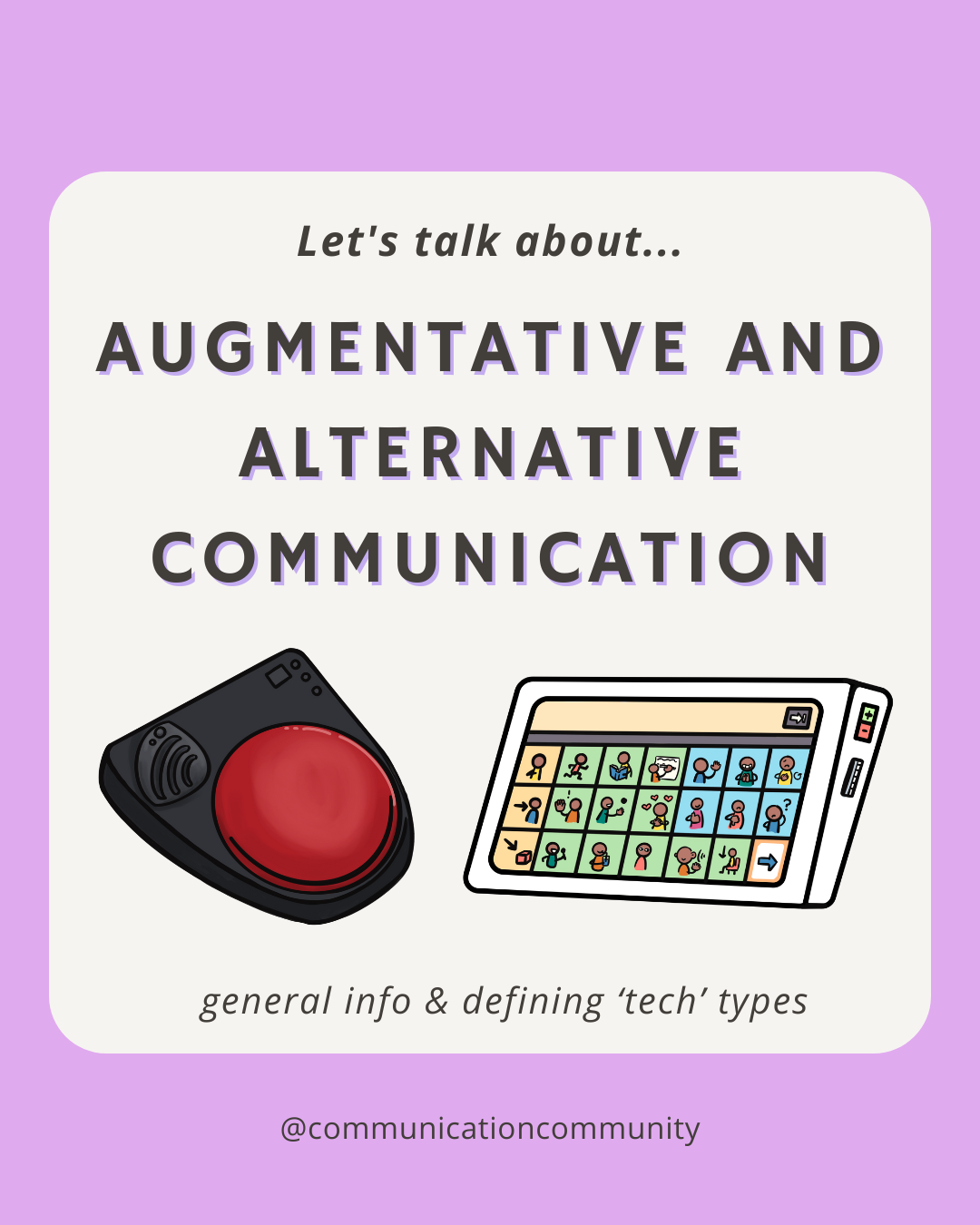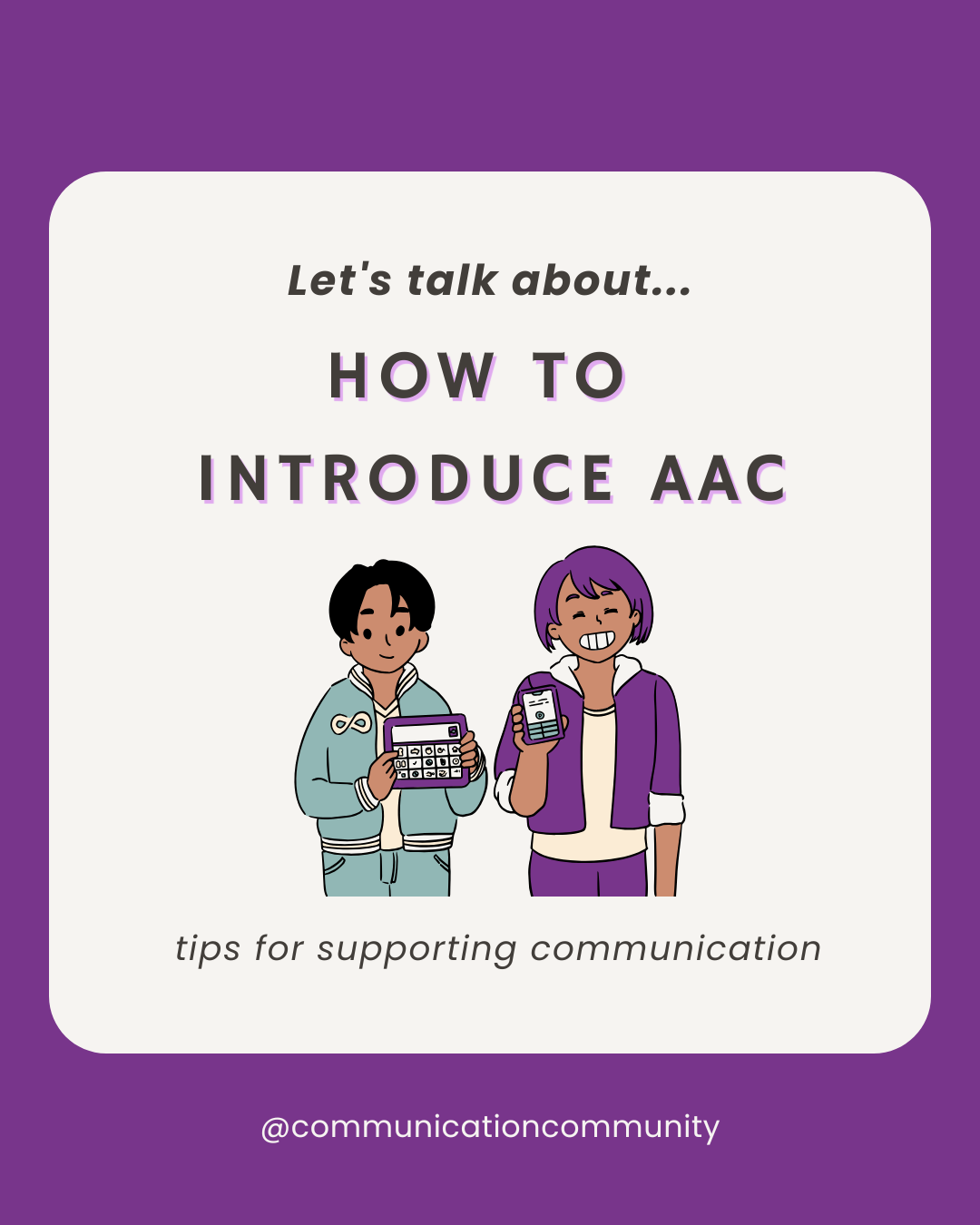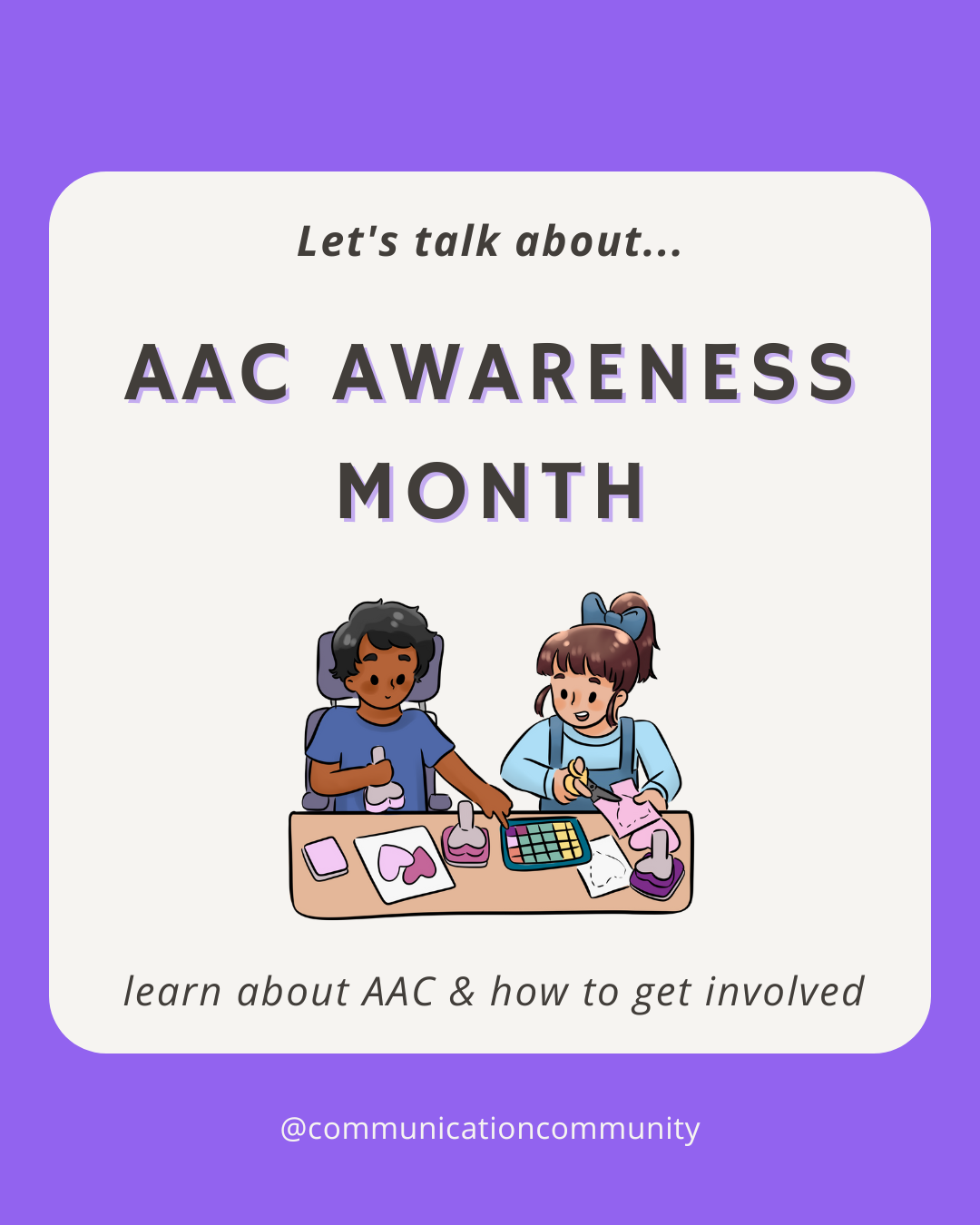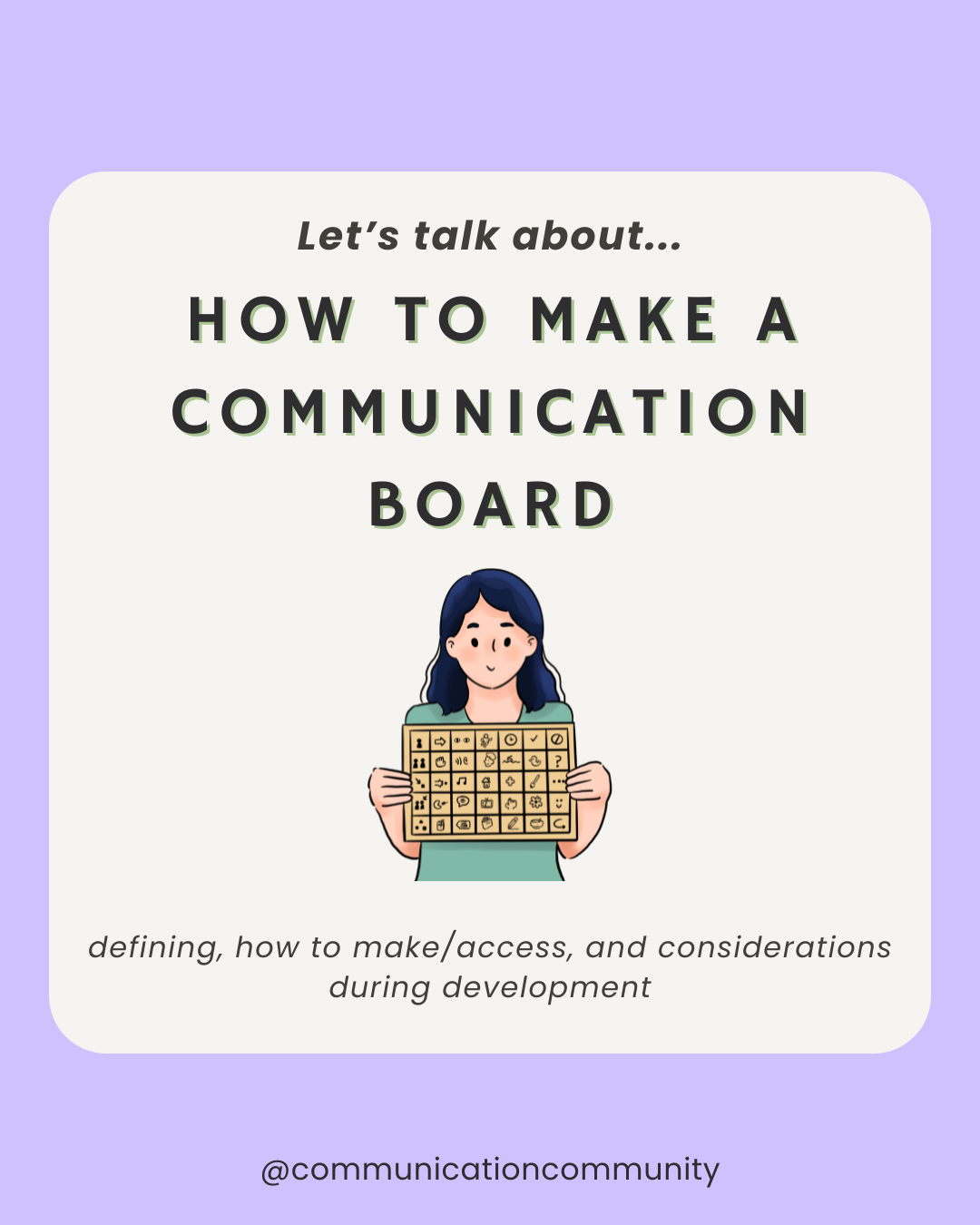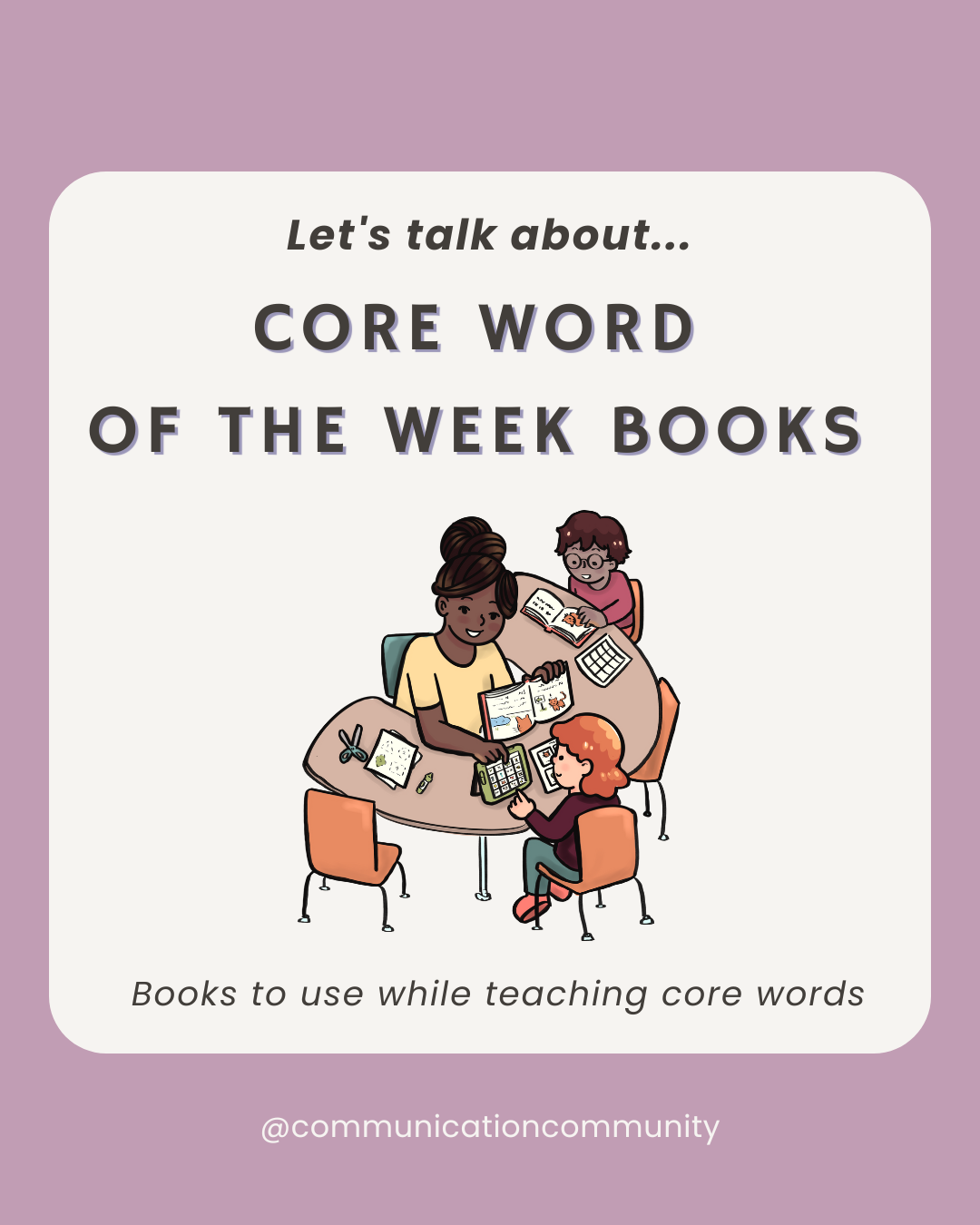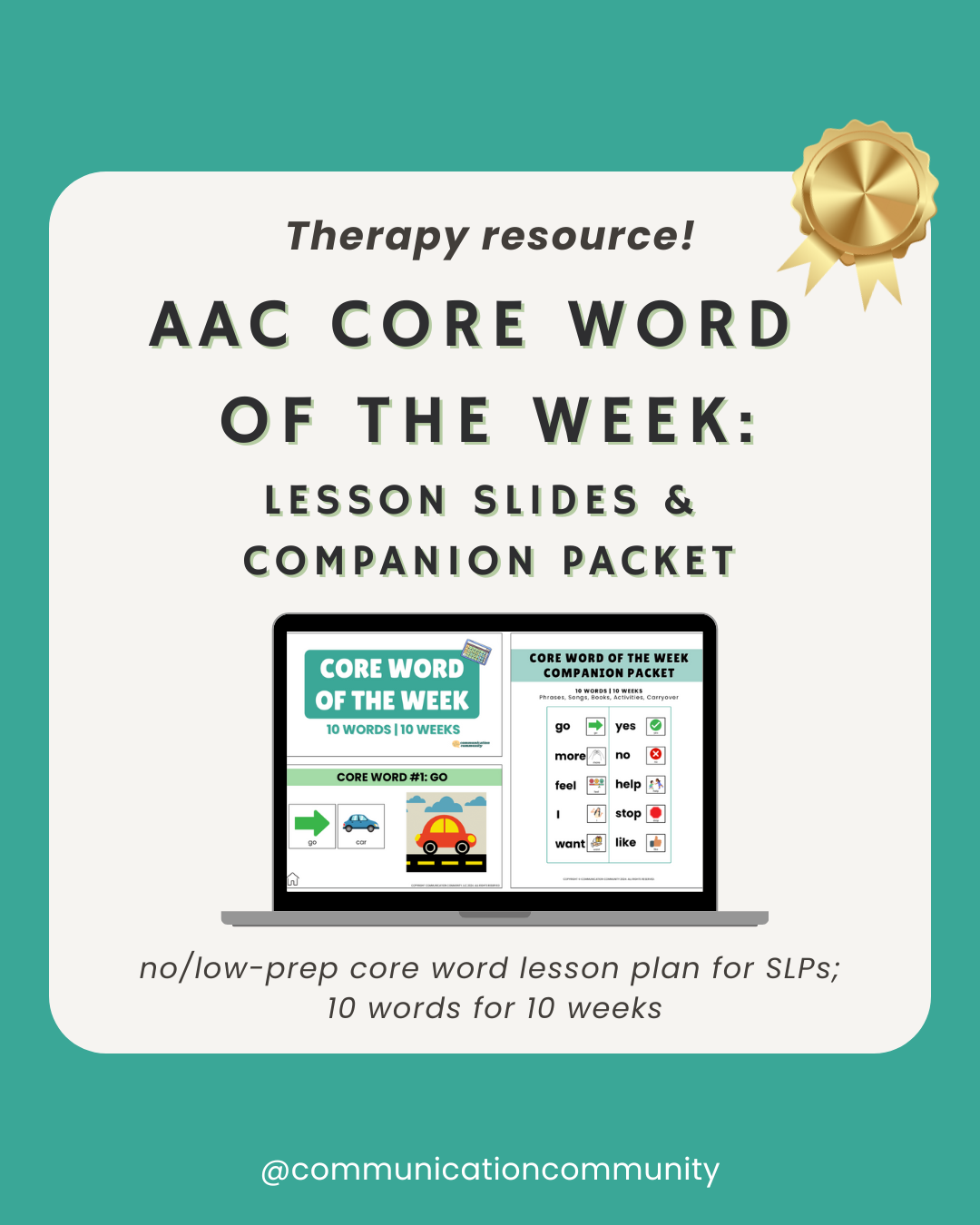Augmentative and Alternative Communication (AAC) is a way to enhance one’s communication, i.e., augment, as well as serve as an alternative means of communication: the back and forth exchange of messages.
Many individuals identify communication solely as “talking;” however, our types of communicative interactions take many forms. Some examples include gesturing (e.g. waving, thumbs up), or even using a high tech computer that you can control with your eyes. As speech-language pathologists, we focus on AAC interventions with an array of individuals who have speech and/or language difficulties to assist with developing augmentative and alternative forms of communication.
To help you better understand the scope of AAC, we have provided a glossary of AAC terms and links to Communication Community's AAC-related articles. Broadly speaking, AAC is often divided into the following categories: no tech, low tech, mid tech, and high tech.
No Tech AAC
No tech AAC is a form of communication that requires no materials other than one’s body (think: unaided systems)
No tech AAC examples: nodding/shaking head; blinking, closing, or moving eyes up/down; thumbs up/down; waving; turning head left/right


Low Tech AAC
Low tech AAC is any sort of communication method that is not "electronic," but requires some sort of equipment outside of one’s body.
Low tech AAC examples: pen and paper, alphabet board, core words board, pictures/symbols, communication book
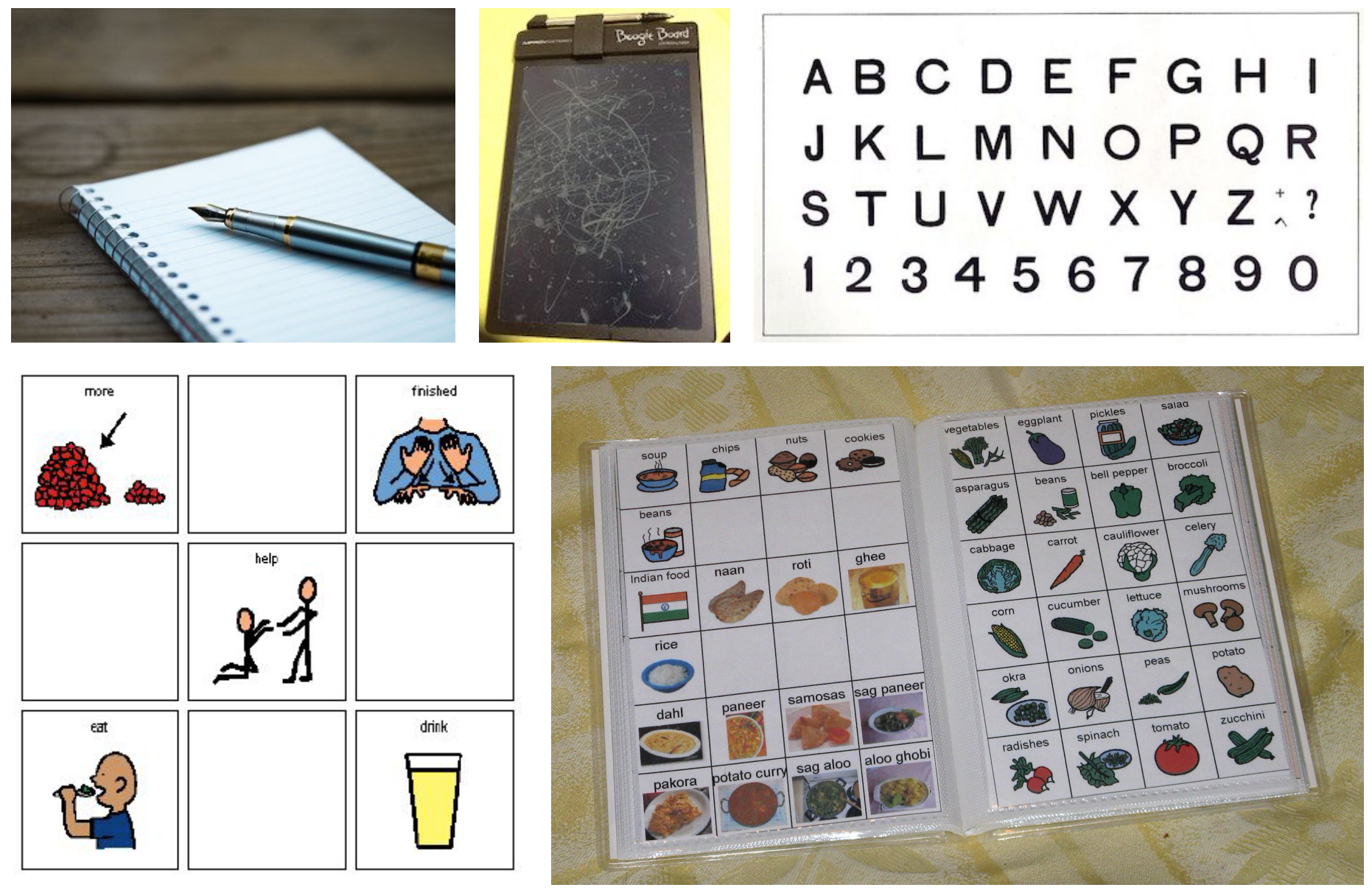
Mid Tech AAC
Mid tech AAC is an electronic device (usually) with auditory output that is battery-operated and has simpler functions (as compared to high tech AAC).
Mid tech AAC examples: buttons and switches (e.g., BIGmack device), single overlay display (e.g., GoTalk 20 grid system)
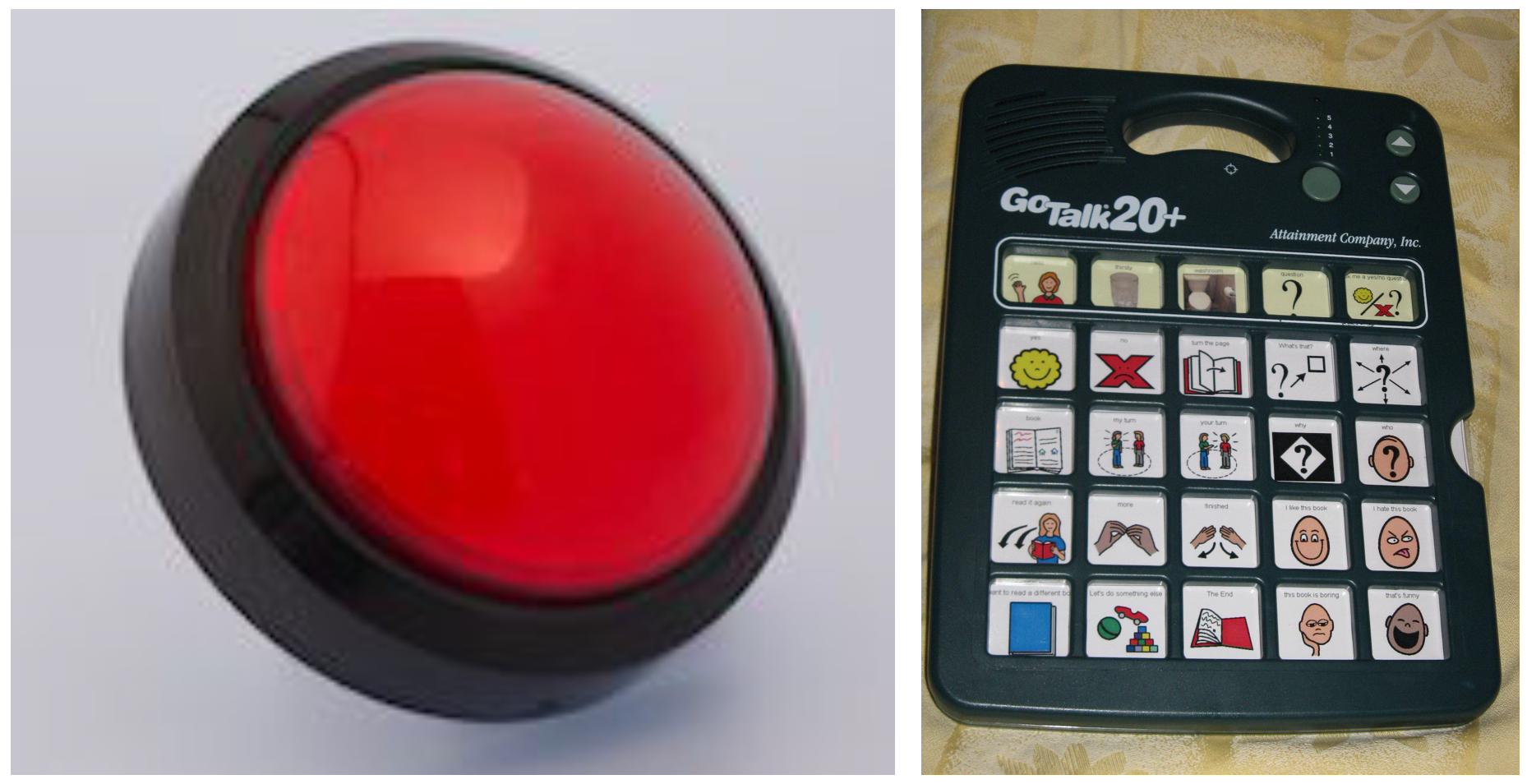
High Tech AAC
High tech AAC is an electronic device with auditory output that contains more advanced processors (as compared to mid tech AAC); also commonly known as Speech Generating Device (SGDs).
High tech AAC examples: dedicated/non-dedicated tablet with a software program for communication (e.g., iPad with Proloquo2go software); a computer with a software program that allows you to type, control a mouse, send emails, and browse the Internet

It is also important to note that these different systems can be used in conjunction with one another (when appropriate). For example, I treated an individual whose primary form of communication was using her high tech AAC system (i.e., iPad with communication software), while she also utilized a low tech picture board that was laminated and taped to her desk.
Related AAC Terms
Aided system: one uses a tool outside of their body for AAC, e.g., SGD
Unaided system: one’s body is the only component necessary for AAC, e.g., gestures; commonly refered as no tech AAC/systems
Core words: sometimes called core vocabulary, refers to the language that we use most frequently in our day-to-day communication
Fringe words: sometimes called fringe vocabulary, refers to the vocabulary that is specific to a topic, individual, or environment
Aided language stimulation: sometimes known as aided language input, refers to using ongoing natural speech while pointing to and labeling key graphic symbols on an AAC device (Dada, Alant, 2009)
Want to learn more? We have many more posts that go into even more detail about AAC!
Types of AAC Devices:
- No Tech AAC devices
- Low Tech AAC devices
- Mid Tech AAC devices, When to Use Mid Tech AAC
- High Tech AAC devices
- Dedicated AAC devices
Vocabulary, ownership, and use of AAC Devices:
- Operational competencies in AAC devices
- AAC System Ownership
- Core Words
- Fringe Words, Choosing Fringe Words
- Using AAC devices in different contexts/environments
- Partner Training in AAC
Activities using AAC devices:
Citations/further resources:

